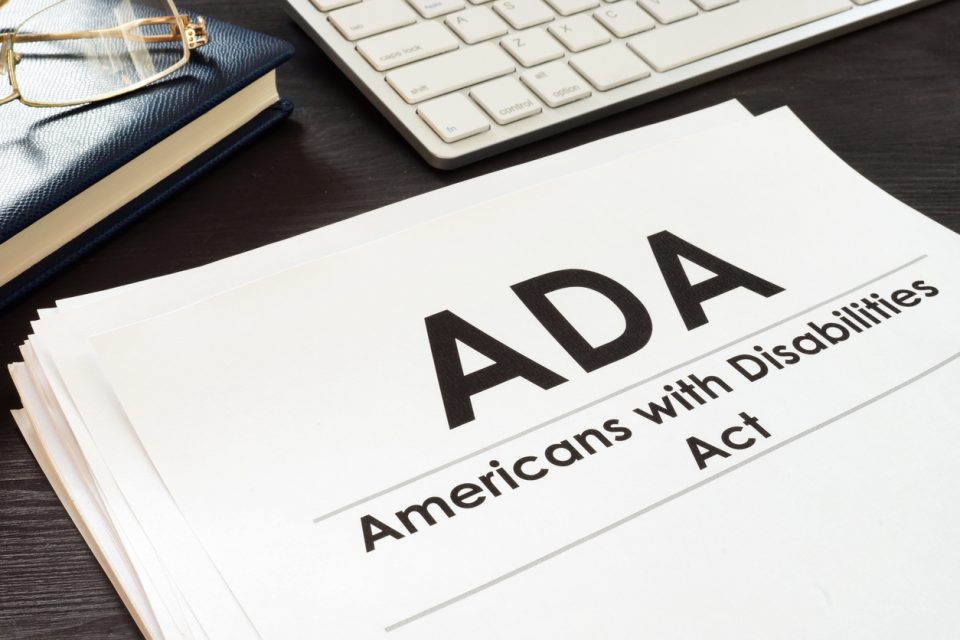

Imagine someone is looking to buy a car, and they come across your website. Chances are, you have plenty of systems in place to push them through the sales funnel.
But wait.
This particular customer is blind. With the help of screen-announcing software, they can browse most websites without a problem. But that’s only if the website has been configured to accommodate those with disabilities. Will yours pass the test? Or, will the customer be forced to move on to a better-equipped dealer?
What the Law Says About ADA Compliance
If you’re someone who owns a business, you’re probably acquainted with the Americans with Disabilities Act (ADA).
The ADA is a civil rights act that was signed into law in 1990. It prohibits discrimination against those with disabilities in all areas of public life. Things like wheelchair ramps, handicap bathrooms, and large-text menus are common ways that brick-and-mortar businesses comply with ADA regulations.
When it comes to websites, the stipulations aren’t as clear. The law doesn’t lay out a list of requirements. Instead, we can reference court cases to see how the legal system holds businesses accountable when it comes to accessibility.
In 2017, a federal judge ruled that Winn-Dixie supermarkets were in violation of the ADA because the chain’s website was not accessible to the visually impaired. Rulings like this often set precedence for other cases to follow, meaning your dealership could be at risk. The plaintiff alleged that Winn-Dixie’s website was incompatible with screenreader software, leaving him at a disadvantage as compared to other customers.
U.S. District Judge Robert Scola Jr. wrote in the final ruling: “The services offered on Winn-Dixie’s website, such as the online pharmacy management system, the ability to access digital coupons that link automatically to a customer’s rewards card, and the ability to find store locations, are undoubtedly services, privileges, advantages, and accommodations offered by Winn-Dixie’s physical store locations.” This ruling established that the business must provide equal accessibility online just as it does in-store. The same statement could easily apply to a car dealership as well.

Benefits of Being Accessible
Apart from avoiding litigation, an ADA-compliant website opens you up to an even larger customer base. You won’t risk losing customers from lack of accessibility, and you can also attract customers from other, less-adaptable dealerships. That extra effort can be what it takes to convert a shopper into a buyer. It can also help you avoid upward of $90,000 in legal fees and court costs.
Moreover, adding ADA accessibility to your website is a matter of doing the right thing to ensure that everyone has equal access to your information, regardless of disability status.
3 Steps Toward A Disability-Friendly Website
1. Avoid small fonts, and use colors that contrast. Even if you don’t have a visual impairment, you know the struggle of reading minuscule, crowded text. Using a larger font and increasing line spacing will automatically make your website more accessible. You should also make sure colors contrast for maximum visibility. Black text on a white background is a classic example of good contrast.
2. Add useful alt text to images. Alternative text is what’s shown if images fail to load. It provides users with a text description of what’s going on. It’s also what is voiced by screenreaders for those who can’t see the webpage for themselves. The problem is that images don’t automatically come with alt text. It must be added manually. In adding alt text, make sure it paints a clear picture of what you’re depicting so that the user can imagine it even without seeing.
3. Add captions or transcripts to videos. According to Facebook, 85 percent of its videos are watched without sound. That trend carries over to other websites, too. Adding closed captions and text transcripts ensures that individuals with hearing impairments can understand what your video is saying. It will also make your content accessible to people who can’t turn on the sound while watching.
Staying ADA Ready
Once you’ve got your website up to speed with ADA compliance, it’s important to put steps in place to keep your accessibility up-to-date. Add a new section to your content checklist that includes accessibility to make sure you don’t forget things like alt tags and captions.
By integrating accessibility into your content creation and website maintenance, you’ll ensure your dealership is open to all.

Posted
John Paul Strong
John Paul Strong combines his two decades of automotive marketing experience with a team of more than 150 professionals as owner and CEO of Strong Automotive.
Explore
Recent Posts


Dealership Has 75% of Population as Facebook Fans

Are Political Ads Hurting Dealerships on Local TV?
Archive
